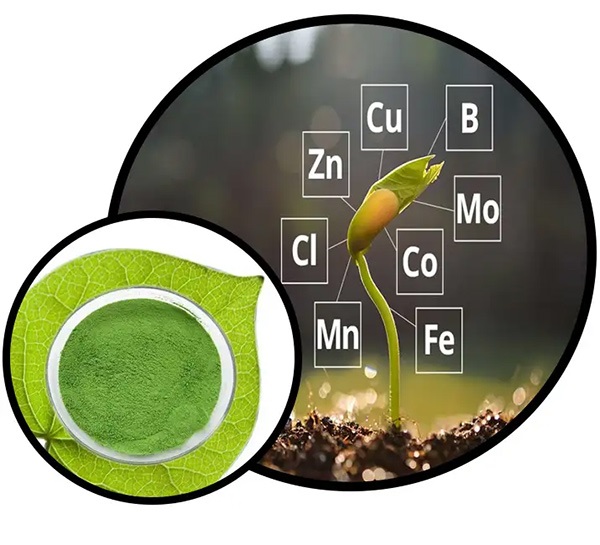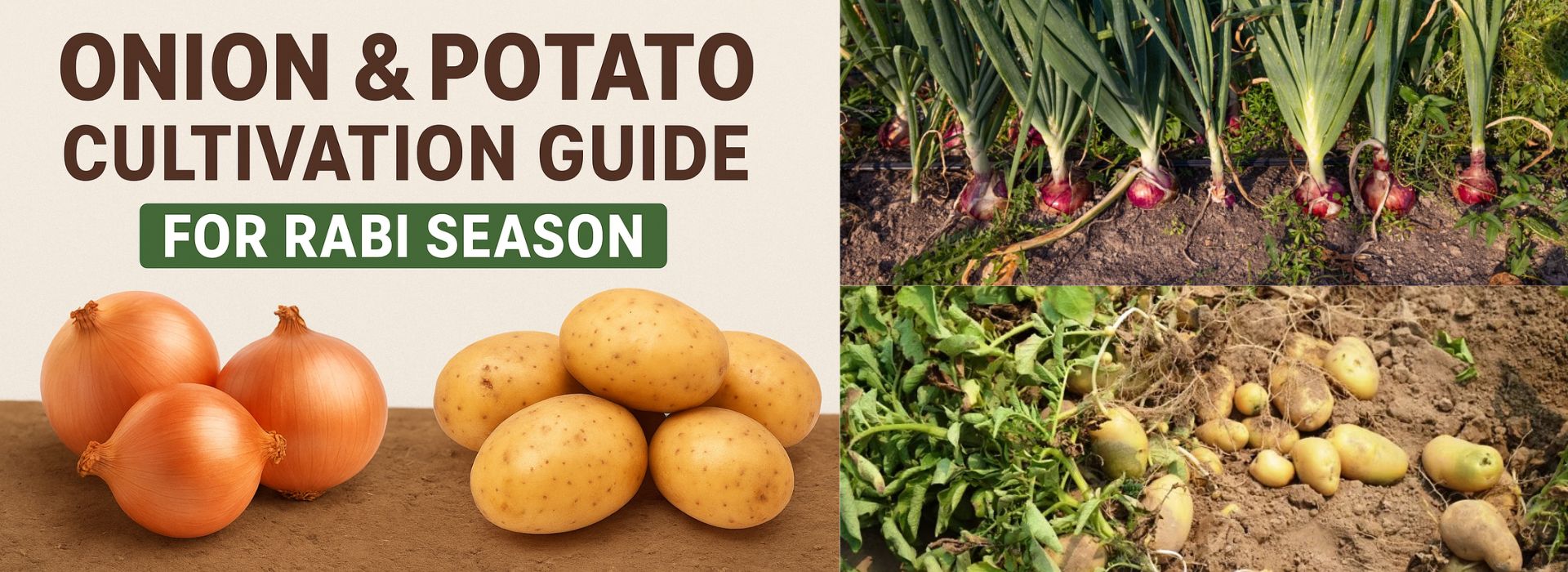The Role of Micronutrients in Plant Nutrition
January 8, 2024Besides the fundamental three essential nutrients, Nitrogen, Phosphorus, and Potassium (NPK), secondary nutrients (S, Ca, Mg), and micronutrients (iron, manganese, zinc, boron, molybdenum, and copper) are required for plant development and soil health.
Micronutrients encourage vital plant processes and development, resulting in nutrient-dense food for animals and humans. Boron, chlorine, copper, iron, manganese, molybdenum, and zinc are examples of micronutrients that are frequently in limited supply for producing crops. These secondary micronutrients are commercially accessible for agricultural use in a variety of forms, including as additives to commodity N, P, and K fertilizers. Homogeneous, granular micronutrient compounds are also manufactured and employed either directly or as minor components of bulk NPK blends. Secondary nutrients, particularly sulfur, are frequently provided in prilled or pastilled form. Granular high magnesium and calcium analysis products are also commercially available.
Let's take a deeper look at each micronutrient's specialized purpose.
BORON
Boron (B) appears largely in soil solutions as the BO3 anion, which plants readily absorb. A sufficient amount of boron is essential for great crop yields and quality. Use Borax or Disodium Octaborate for BORON deficiency.
According to existing studies, boron has an important function in Plant cell wall tensile strength Cell division and membrane function Metabolic pathway stimulation/inhibition Flower and fruit development new and reproductive growth. Boron deficiency symptoms arise initially at the growth points, and particular soil types are more susceptible to boron deficits.
ZINC
Zinc has traditionally been the micronutrient most frequently required by western crops. Citrus crops are often treated with foliar zinc treatments one or more times each year. Other tree crops, such as grapes, beans, onions, tomatoes, cotton, rice, and corn, have also required zinc fertilization in the past. Use Zinc Sulphate for ZINC deficiency Zinc has an important function in: Zinc stimulates enzymes that are involved in creating some proteins.It aids in the production of chlorophyll and certain carbohydrates, the transformation of starches to sugars, and its existence in plant tissue aids in the plant's resistance to low temperatures.
Zinc is required for the production of auxins, which aid in growth control and stem elongation. Zinc, like other micronutrients, is immobile, therefore deficient symptoms appear in young leaves. The symptoms differ depending on the crop. Typically, they manifest as a variable pattern of chlorosis of young leaves, with necrotic patches forming on the edges of leaf tips. These new leaves are smaller and frequently cupped upward or twisted. Internode lengthens, giving the plant a rosette look, and bud development is limited, leading to less blooming and branching.
IRON
Iron (Fe) is essential for chlorophyll synthesis in plant cells. It stimulates metabolic activities like respiration, photosynthesis, and symbiotic nitrification. High levels of manganese or lime concentration in soils can cause iron deficiency. Use Ferrous Sulphate for IRON deficiency Iron's function in plants depends on the availability of simple transitions between its two oxidation forms in solution. Plants store iron as ferritin, a protein that encases ferric iron. Iron has an important function in: Iron aids in the movement of oxygen throughout the plant's roots, leaves, and other sections, resulting in the green tint that shows a healthy plant. Iron is also required by many plants to fulfill the enzyme processes that keep the plant alive. Even while plants only require a trace quantity of iron, its absence can have fatal consequences. Iron deficiency is most commonly shown as chlorosis. This is the term used to describe a situation in which young leaves are yellow rather than green, however, they still have green veins. A lack of oxygen transport, which is induced by an iron deficiency, creates the yellow tint. The plant's leaves do not get enough oxygen if iron is not present. They can't create enough chlorophyll if they don't have enough oxygen. The green hue is absent in the absence of chlorophyll. If the iron deficit persists, older leaves will develop chlorosis and become yellow. The problem might then progress, resulting in leaf loss and poor overall development until the plant dies.
MANGANESE
Manganese acts as an enzyme activator throughout the growth process. It aids iron in the production of chlorophyll. It is a component of the mechanism that splits water and liberates oxygen gas. The manganese-containing superoxide dismutase is the other protein in which manganese is an essential component. This enzyme is found in many aerobic organisms. This enzyme's role is to guard against free oxygen radicals produced when O2 gets a single electron. Superoxide dismutases convert this very dangerous free radical into hydrogen peroxide, which is then broken down into the water. High manganese levels can cause iron insufficiency. Manganese, along with zinc, is typically required in citrus foliar spraying. Use Manganese Sulphate for Manganese deficiency. Manganese deficiency symptoms include: Young leaf interveinal chlorosis Pale green coloring with deeper pigmentation along veins. As with iron deficiency, there is no clear demarcation between veins and interveinal zones. Gray specks (oats), interveinal white streaks (wheat), or interveinal brown patches and streaks (barley).
COPPER
Copper (Cu) is one of the eight necessary micronutrients for plants. The formation of chlorophyll and seeds, as well as several other enzymatic processes in plants, depends on copper. Copper deficiency can increase susceptibility to diseases, such as ergot, which can cause considerable yield loss in tiny grains. Copper shortage can arise in soils with a high organic matter content and sandy soils. Copper deficiency is more common in cereal grains such as wheat, barley, and oat. Copper deficiency affects several vegetable crops, including onions, lettuce, and carrots. Use Copper Sulphate for Copper Deficiency. Copper deficiency symptoms include Chlorotic or deep blue-green leaves with rolled-up edges. Tree bark is frequently hard and blistered, and gum may seep from fissures in the bark. Young shoots wither and perish. Annual plants cannot produce flowering and fruiting, and they may die at the seedling stage.
Stifled Growth. Gum pockets form around the center pith of oranges.
CALCIUM
Calcium (Ca) is essential for the formation of plant tissues and the growth of plants. Calcium is to keep plant cell walls together. It is also necessary for the activation of specific enzymes and the transmission of signals that coordinate certain cellular functions.Use Calcium Nitrate for Calcium deficiency. Calcium is essential for root system growth. Calcium also improves resilience to outside assault and boosts the feed value of forage crops for cattle. Calcium deficiency symptoms: Calcium shortage slows root development and causes root tips to die. A lack of calcium makes the crop susceptible to illness. Blossom end rots in tomatoes, tip burns in cabbage, and black heart in celery are examples of these illnesses. Because calcium is immobile inside the plant, deficiency symptoms emerge on younger leaves when calcium delivery quits. The margins of new leaves are curled, and the developing tip may perish.






Guest reviews
No reviews found for this Blog